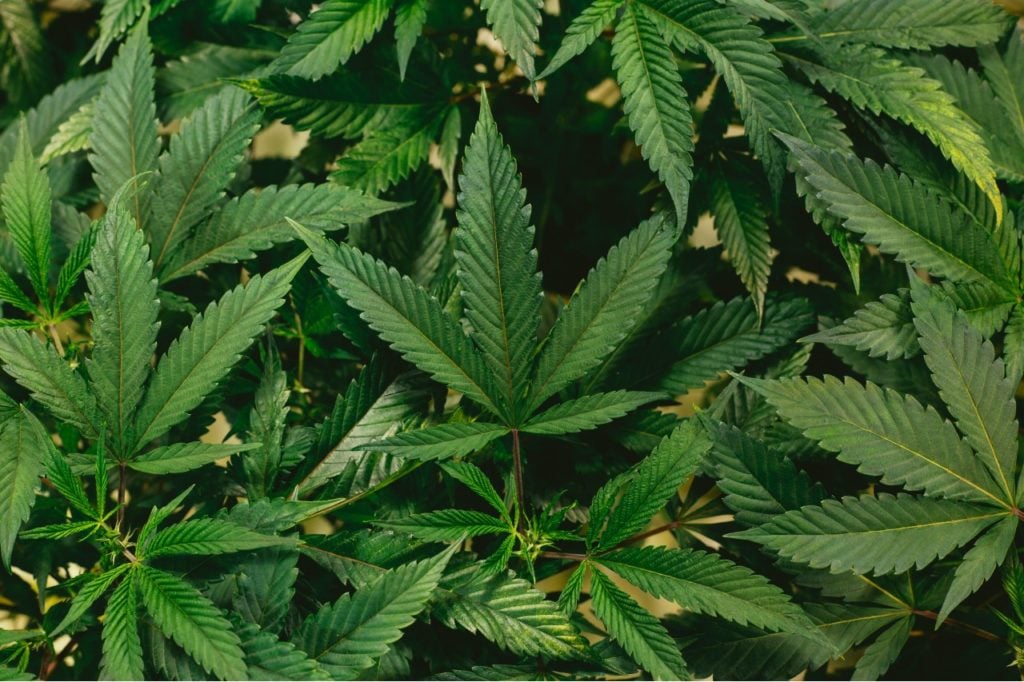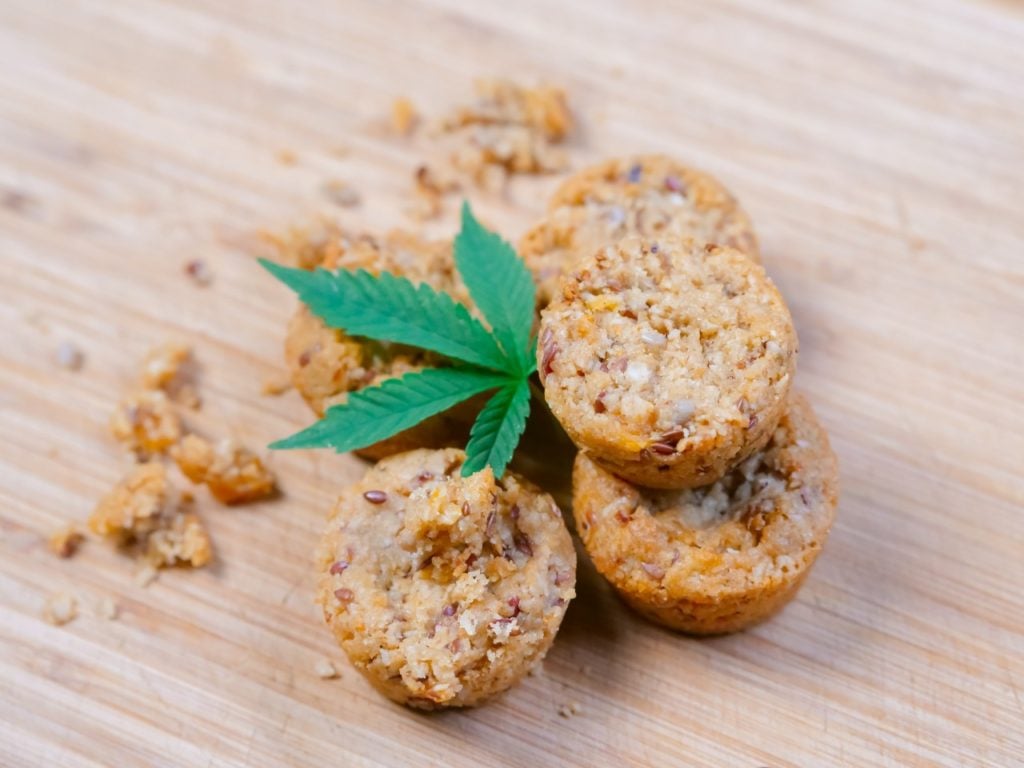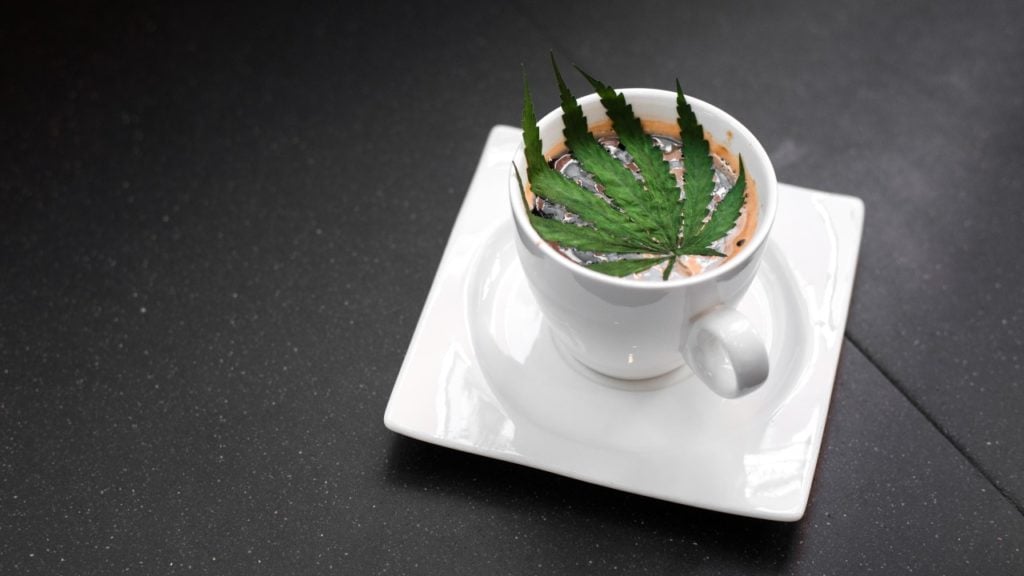
It’s easy to wonder what to do with weed stems. For many, the answer is simply to get rid of them. After all, they are harsh to smoke, and is there THC in stems anyway?
Actually, there is. The quantities are small, but when processed correctly, and at a high enough density, it can still get the job done.
In this article, we take a look at what to do with leftover weed stems and leaves so that you can make the very most of your stash.
1. Decarb Stems
The de-carb process is a scientific method of removing carbon atoms from your stems to breathe new life into its THC content. This process is actually required before cannabis can be used in any of its forms.
Even though it sounds very complicated, the process itself is very straightforward. If you have the supplies to make cookies, you are well equipped.
First, preheat your oven to 220 degrees Fahrenheit. As it’s warming, take your stems, and spread them carefully over a foil-lined roasting pan. It’s important to arrange the stems neatly, with no overlap so that they are all exposed equally to the heat.
Slide the pan into a middle rack, and roast for approximately thirty-five to forty minutes. It’s important to monitor your weed stems throughout the process. If they begin to brown or burn, the entire batch is ruined. To avoid this, consider rotating your pan once or twice during the bake time.
This will help to make sure the stems are baked evenly. Once your timer goes off, most experts recommend turning the heat off but allowing your pan to cool in the oven. It can take about an hour for a pan to cool completely. Patience is necessary, but the rewards are well worth it. Decarbonated weed stems!
Note: It may be better to err on the side of caution. When THC gets too hot it turns into a chemical known as CBN. While CBN requires temperatures of closer to 300 degrees, there are many ways that could still happen even with a milder setting on your oven. Your oven’s thermometer could be off or you simply leave it in for too long.
Though CBN has its uses, it’s not strongly associated with psychoactive effects, so be careful!
2. Create Cannabutter & Edibles

Once you’ve decarbed your weed stems, the process of using it to make cannabutter is actually quite simple.
Step 1: Grind it: Ideally, you will make sure that your mixture has a perfectly consistent texture. You don’t want to grind the stems too much, as this will make them more susceptible to burning. However, with a good, even consistency, you will be ready for your next step.
Step 2: Simmer: Next, melt butter in a skillet, and allow your newly ground stems to simmer on your stove’s lowest setting. Most people do this phase for about 40 minutes to an hour. However, it’s important to monitor your butter at all times. If it begins to brown or burn, remove it from heat. Stir regularly to avoid sticking.
If you have a candy thermometer, it will come in handy here. The goal is to make sure that the mixture never exceeds 190 degrees. Some “smart thermometers” can actually remain in the mixture for the entire length of the cooking process. These devices will send alerts to your phone if the temperature trends in the wrong direction. Short of this, your job will simply be to monitor it constantly.
Step 3: Strain the Mixture: Simmering the mixture allows your cannabis’s THC to naturally incorporate into the butter. Now that you’ve achieved that, you’re going to want to get rid of the unappetizing, grainy weed stems.
To strain your butter, pour it through a cheesecloth or fine mesh strainer. The latter tends to be preferred by most people, as cheesecloth will soak up some of your precious butter. Use what you have though. Once you’ve strained out the stem residue it’s time to move on to the next step.
Step 4: Refrigerate: This part is pretty easy. Put your mixture in the fridge and wrap it up tightly until it hardens. You now have a functional cannabutter!
It’s important to note that cannabutter doesn’t usually last as long as its pre-infused alternative. It typically has a shelf life of about two weeks (or about six months in the freezer), which means it is time to get to cooking.
Cannabutter can be used in much the same way as regular butter. For example, if you have a cookie recipe that calls for one cup of regular butter, sub in one cup of cannabutter instead. Just be careful when you consume your newly made edibles.
Many find that it is best to eat only small portions of your baked goods as you are figuring out your tolerance. If you want to learn more about cooking with cannabis, we have the perfect class for you. Join us in one of our Puff, Pass & Bake Cooking Classes.
3. Infuse in Alcohol
You can also infuse stems in alcohol by soaking them for long periods of time. Technically, it is possible to do this with rubbing alcohol, but THIS IS NOT RECOMMENDED, as isopropyl alcohol was not made to be consumed.
People tend to reach for rubbing alcohol because its extremely high alcohol content makes it very good at extracting a lot of THC. However, you can do the same good work with high-proof alcohol like Everclear. Bonus? It’s not toxic.

To perform this, begin by sticking your stems and the alcohol in the freezer.
The rubbing alcohol will not freeze. The stems will. This is good because it preserves more of the THC.
After twelve hours in the freezer, you’re ready for the next step.
Pour your alcohol and stems into a mason jar. Shake vigorously, and then pour both through a sieve into a bowl. The sieve will strain out the stem remnants, leaving behind a liquid with a greenish tint to it. Your cannabis is now infused with alcohol.
Now, it’s time to extract the toxic part. Pour the liquid on a flat surface, and wait for it to evaporate. This can take up to twenty-four hours. You will know you have completed your task when there is no more liquid on the surface. What remains will be small, THC-rich chunks.
4. Make Weed Stem Tea or Coffee

Cannabis-infused tea or coffee is actually very easy to make. To begin, boil one gram of your decarbed stems in a pot of water and here’s a hint, use a bit of milk. The milk has fat that the THC is attaches to easier.
Some people actually prefer to simmer instead, as this tends to preserve the flavors of the terpenes. Since we are working with the stems here, the flavor isn’t much of a consideration.
It takes about fifteen minutes to infuse the water with THC.
After, strain the water with a cheesecloth, and then steep your preferred tea for about three minutes. Or just pour that hot water over some ground coffee and WA-lah, talk about a pick me up.
5. Use in Smoothie or for Juicing
Cannabis stems can also be used for making a smoothie or for juicing. As anyone who juices or makes smoothies regularly knows, it’s an art form with an enormous amount of flexibility. You can put pretty much anything in there, which means there’s no precise recipe for juicing cannabis stems.
The natural flavors of the stems may encourage many users to opt for sweeter support ingredients (fruit, ginger, cinnamon, carrots, etc). However, you can also just incorporate the stems into your favorite existing recipe.
However, you do it, juicing your cannabis stems is certainly a worthy application. While there will be no psychoactive benefit to juicing raw cannabis stems, there are lots of nutritional boons. Cannabis stems are rich in antioxidants, as well as trace elements of a wide range of cannabinoids that boast their own health benefits. In fact, some experts believe cannabis is one of the most nutritionally rich plants on the planet!
6. Make Bubble Hash
You make bubble hash by submerging cannabis stems and trimmings in ice and then shaking it up really well. Simple, right? There are more sophisticated ways of doing it that involve fancy tools, but the amateur can get the job done easily enough with a spoon, paddle, or any other mixing utensil.
For the DIY version of bubble hash, fill a large bucket full of ice and water. Place your cannabis in the bucket, and stir vigorously in cycles. The idea is to mix but not crush the ice.
The mixing, or disruption process as many call it takes place over four 10-15 minute cycles.
Once you have completed your cycle strain the solution through a filter bag.
You will notice that your final product is very liquidy. To solve this, freeze it for several hours, then grind it to a fine powder and leave it to dry in a low humidity environment. This may take several days, but the wait is well worth it. Bubble hash is highly potent and features none of the harmful chemicals that so many hash products suffer from.
7. Composting
Composting is an environmentally friendly way to make the most of old plant materials. If you are not interested in using your cannabis stems in any other way, consider tossing them on the compost heap.
There are many ways to compost. Some use wood frames, ditches, or simply bare earth. Set up a predefined boundary, dump your organic materials, and help mother earth. It’s a win, win.
8. Use in Arts and Crafts

You can also just find ways to incorporate your stems into crafts. There are many nature-oriented arts and crafts projects that involve painting, making sculptures, dioramas, and all other manners of arts and crafts.
If you are looking for a guided craft, consider one of our legendary Puff Pass and Paint classes. These courses infuse art and cannabis in a way that is not only fun and inclusive but also well structured for people who take their art seriously. And hey, bring some of your weed stems to the class and we can incorporate them into your painting!
Frequently Asked Questions About Weed Stems
Can You Smoke Weed Stems?
Can you smoke weed stems? Technical, of course, you can. You can smoke stems the same way you smoke cannabis flower. The real question is if you should. Stems tend to taste foul and come down your lungs very harshly.
They also have a much lower THC count than flower making it all the more impractical. If you are hard up for other cannabis, it might be worth giving it a shot. In most cases, however, it seems that Afroman was at his very wisest when he advised us all to “pick out the seeds and stems.”
Do Weed Stems Get Your High?
Weed stems do have the capacity to get you high, though it typically requires a much higher concentration to get the job done. The processes described in this article may improve your odds significantly.
For example, edibles tend to be more potent than smoked cannabis because they are metabolized by your liver. If you want to get as much mileage from your stems as possible, you might consider one of those methods.
However, you should moderate your expectations. The high will be mild at best, and more experienced users may not feel anything at all. For most people, stems enter into their cannabis diet either out of desperation or a desire not to be wasteful.
Is there THC in stems?
Stems do contain trace amounts of THC. The de-carbing process described in this article can help bring that THC to life, allowing you to enjoy the psychoactive effect. However, it’s important to note that the stems have very little THC relative to other parts of the plant.
For that reason, some users may prefer to reserve their stem stash for occasions in which they need to enjoy a much milder high. Doesn’t it sound nice to sit down and read a book with a steaming mug of stem-infused tea?
How to ground weed stems?
Grinding stems that have been dried requires essentially the same process as grinding any other form of cannabis. Insert the stems into your grinder, twist until the desired consistency has been achieved, and then use the stems however you prefer.
Note that you may wish for a coarser consistency than you may otherwise usually opt for. Stems tend to be dryer than cannabis flower. They will burn very hot and quickly no matter what you do, producing harsh, unpleasant smoke. A coarser grind won’t fix the problem entirely but it can help.


